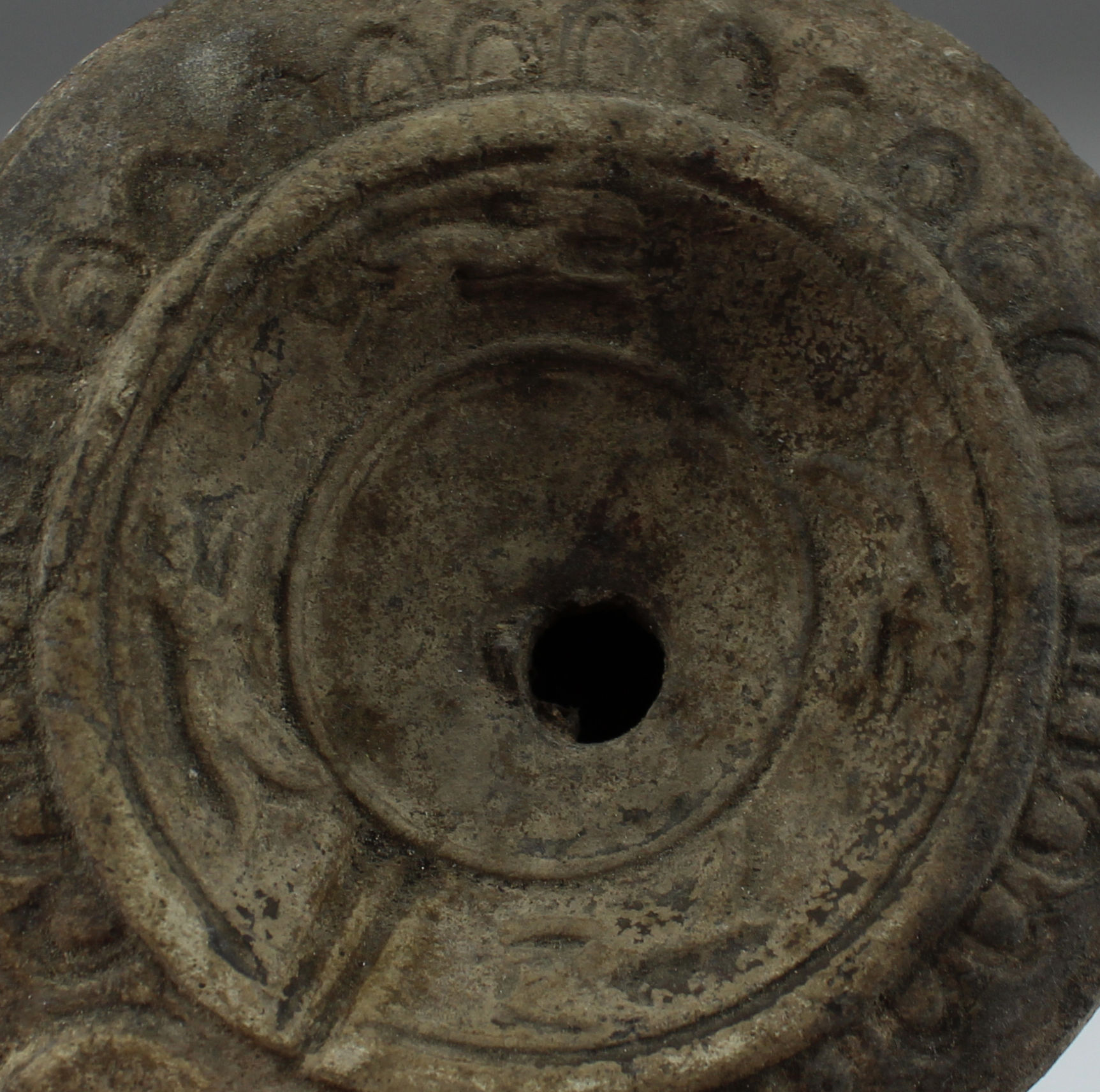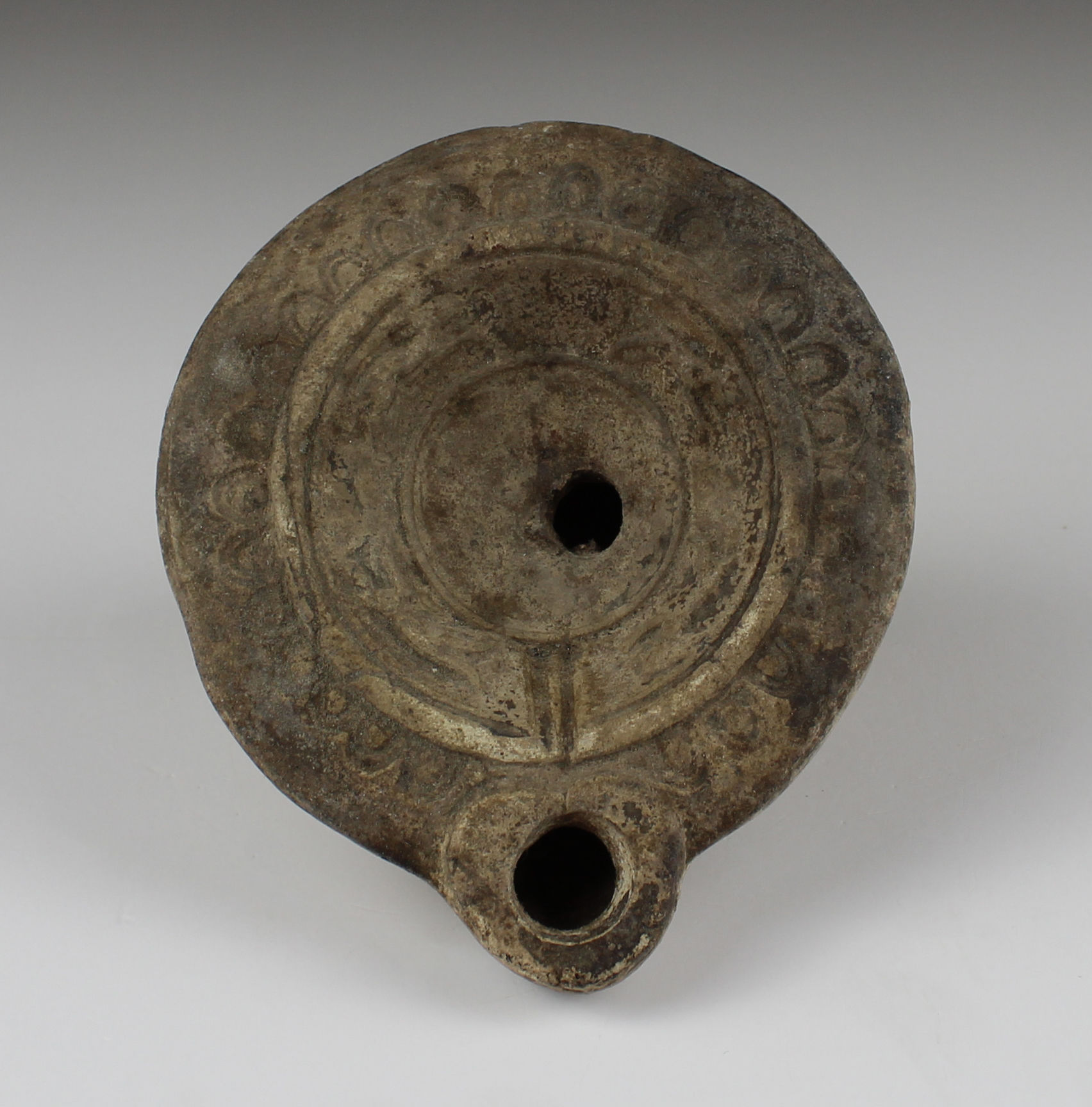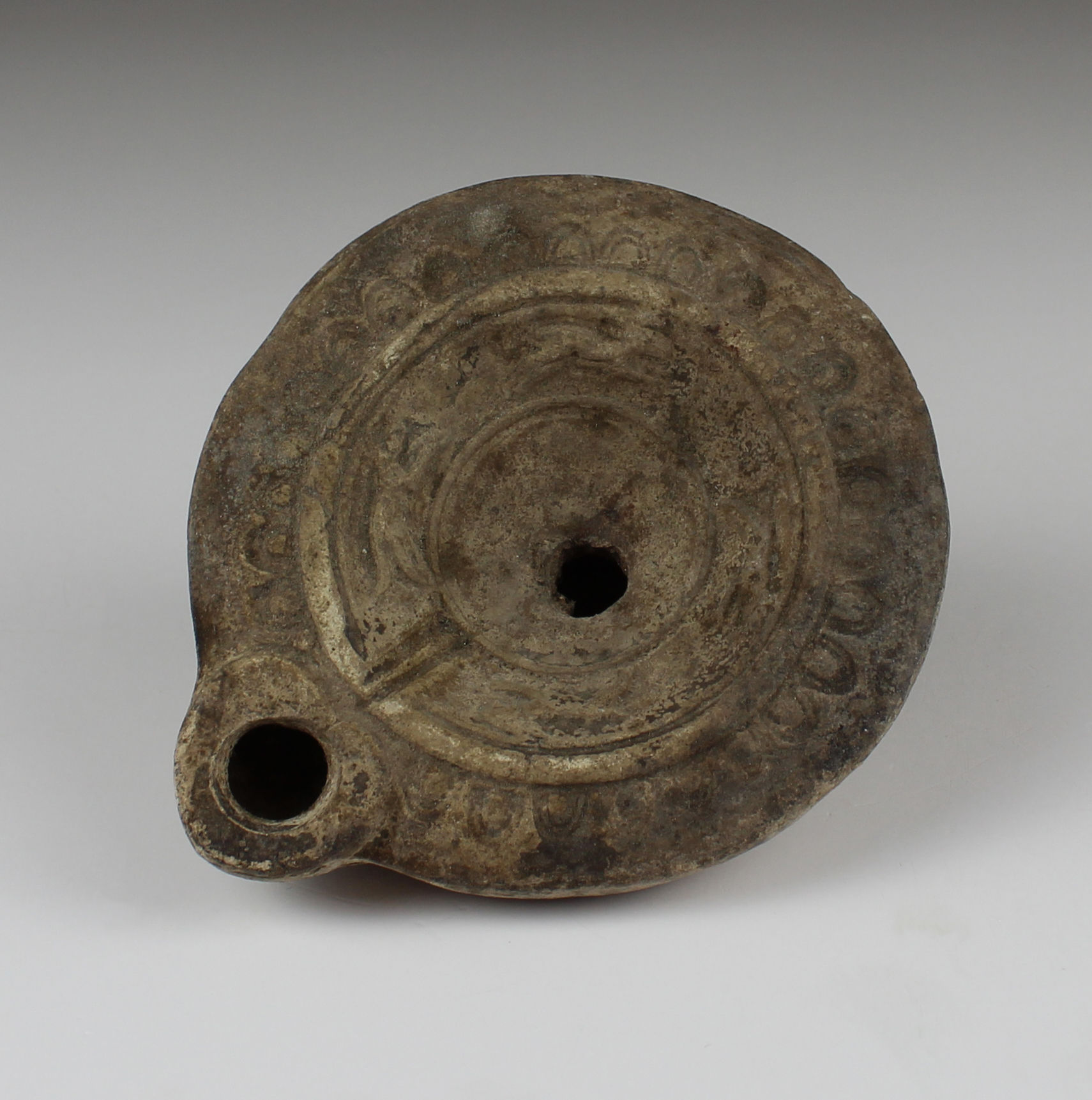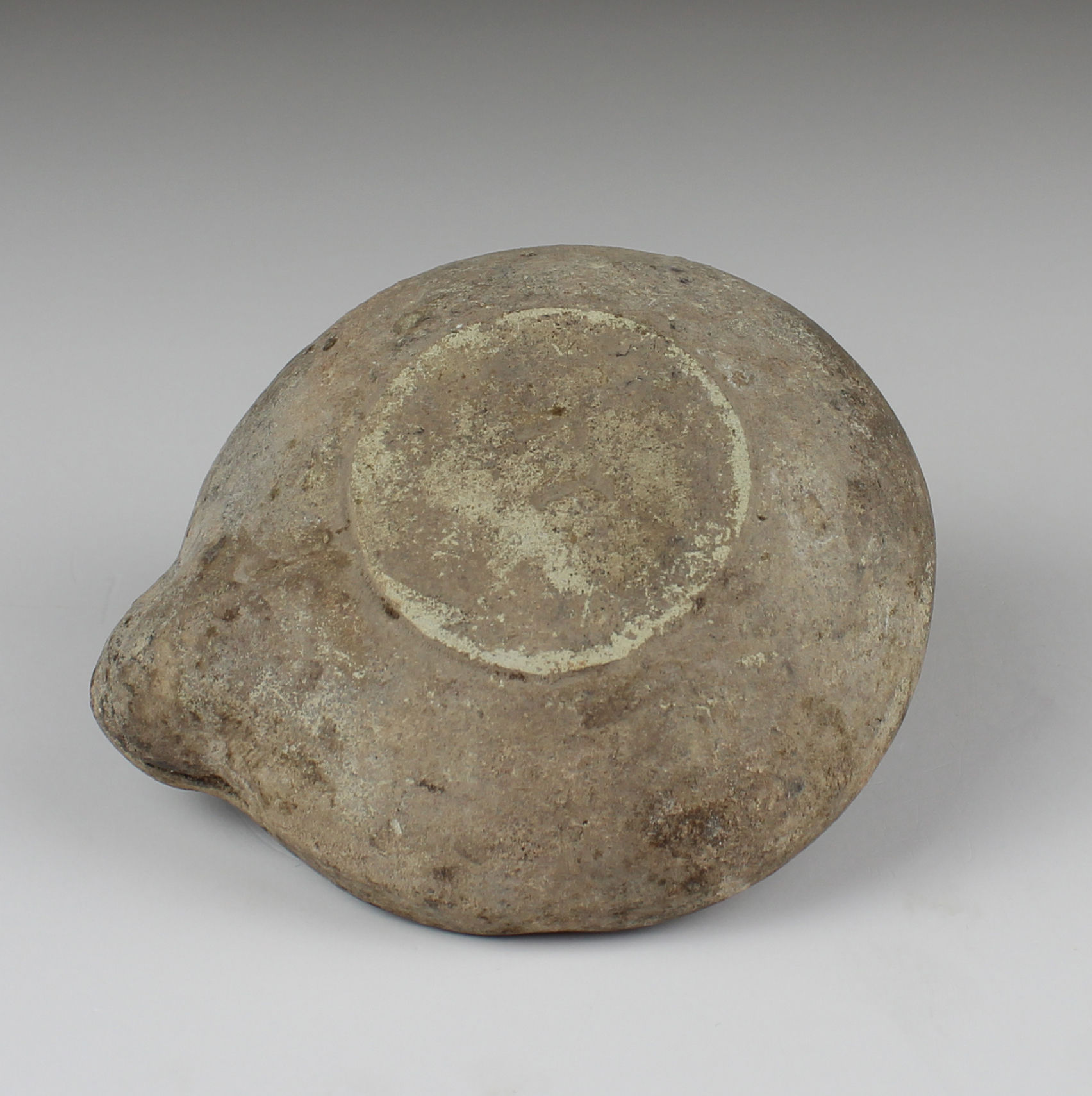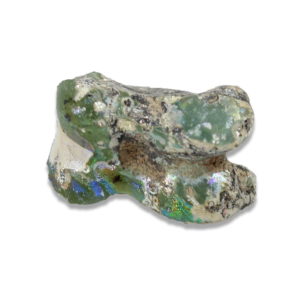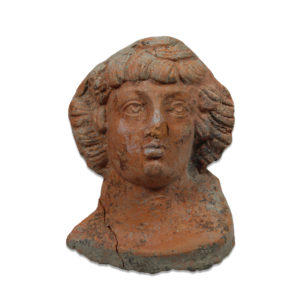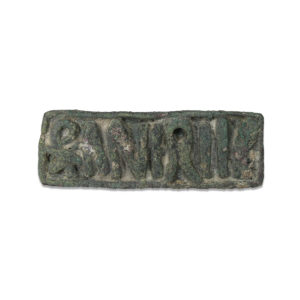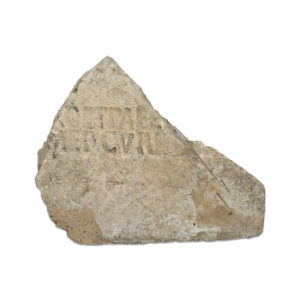Description
| ITEM | Oil lamp with two dogs alternating with two hares in a circle |
| MATERIAL | Terracotta |
| CULTURE | Roman |
| PERIOD | 1st – 3rd Century A.D |
| DIMENSIONS | 28 mm x 75 mm x 87 mm |
| CONDITION | Good condition |
| PROVENANCE | Ex Marius-Victor-Ernest Dumas private collection (North Africa and France), acquired in Tunisia between 1890 – 1920. M. Dumas was Controleur Civile (French colonial administrator) of the city of Sousse in Tunisia prior to World War I. This collection of Roman and North African antiquities has remained in the family for the past 100 years in the Haute-Savoie region of France. |
| PARALLEL | DENEAUVE J., Lampes de Carthage, Pl. LXXVII, Fig. 832 |
Dogs were highly valued in ancient Rome, as they were in other cultures, and the Roman dog served many of the same purposes as it did in, say, Egypt and Persia – as hunters, guardians, and companions – but with a significant difference in focus.
Like the Egyptians, the Romans created their own artistic dog collars – some of gold – and, although dogs did not feature in the Roman afterlife (as they did with the Persians), they were considered the best protection against ghosts or evil spirits. The central difference between the Roman view of dogs and that of other cultures is that the Romans viewed dogs far more pragmatically.
Roman culture across the board was more grounded, for the most part, than others, and their view and treatment of dogs fit this paradigm. A dog collar in Egypt was an expression of the animal’s individual spirit; a dog collar in Rome – even one of gold – served a completely practical purpose.
The dog was a companion, guardian, hunter, professional fighter, tracker, fellow warrior, and was offered to the gods in sacrifice during some eras. It served to keep one warm at night, alerted an owner to the presence of unseen spirits, and was regularly depicted in Roman myths and legends in practical roles.
They were originally bred and used by the Etruscans of Italy prior to the rise of Rome (how the Etruscans viewed them is unclear) and the Romans made full use of the dog in every aspect of their lives, cared for them as they would family members, and honored them when they died with tombs and epitaphs.


